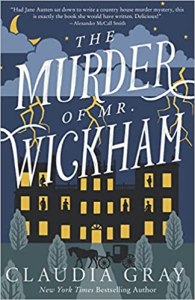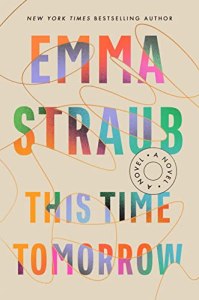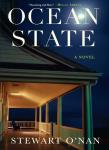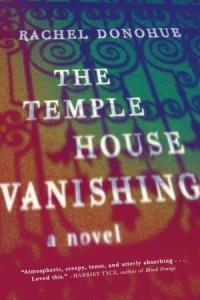 Let’s agree that summer reading is whatever you want it to be, from the classic you always meant to read to the escapist tale set in sunny climes. That being said, I’d be happy to begin my summer every year with a new Jane Austen. Alas, that’s impossible, although myriad other writers have tried to carry on with their own sequels, prequels and pastiches. Some have been fun, others dreadful. Claudia Gray’s The Murder of Mr. Wickham (Vintage, e-galley) is a delight. Both a clever comedy of manners and smart mystery, it assumes that Austen’s characters all know each other and are attending a summer house party at the Knightleys’ country estate. Emma’s the perfect hostess, but even she’s rattled by the sudden appearance of villainous George Wickham, still a rogue and now a swindler. Everybody would like to kill him, and, no surprise, someone does. But who? The two teenagers among the guests — Jonathan, the serious, socially awkward son of the Darcys, and Juliet Tilney, the charming daughter of now famous novelist Catherine Moreland — turn detective. I wouldn’t be surprised if we see more from them in future books, which would be fine with me. As Austen said, “For what do we live, but to make sport for our neighbors, and laugh at them in our turn?”
Let’s agree that summer reading is whatever you want it to be, from the classic you always meant to read to the escapist tale set in sunny climes. That being said, I’d be happy to begin my summer every year with a new Jane Austen. Alas, that’s impossible, although myriad other writers have tried to carry on with their own sequels, prequels and pastiches. Some have been fun, others dreadful. Claudia Gray’s The Murder of Mr. Wickham (Vintage, e-galley) is a delight. Both a clever comedy of manners and smart mystery, it assumes that Austen’s characters all know each other and are attending a summer house party at the Knightleys’ country estate. Emma’s the perfect hostess, but even she’s rattled by the sudden appearance of villainous George Wickham, still a rogue and now a swindler. Everybody would like to kill him, and, no surprise, someone does. But who? The two teenagers among the guests — Jonathan, the serious, socially awkward son of the Darcys, and Juliet Tilney, the charming daughter of now famous novelist Catherine Moreland — turn detective. I wouldn’t be surprised if we see more from them in future books, which would be fine with me. As Austen said, “For what do we live, but to make sport for our neighbors, and laugh at them in our turn?”
 In Emma Straub’s funny and poignant new novel This Time Tomorrow (Riverhead, purchased e-book), Alice falls asleep on her 40th birthday and wakes up in childhood home on her 16th birthday. She doesn’t know what’s happened except that it’s really happening. “It was the wobbly nerves in her stomach, like the drop on a roller coaster; it was the hyperawareness of everything around her. Alice felt like Spider-Man, except all her powers were those of a teenage girl.” Actually, Alice now has the power of time travel, with certain limitations, and has the chance to be young again with her healthy, cheerful father Leo, author of popular novels about time-traveling brothers. And, maybe, just maybe, she can tweak the timeline so that Leo isn’t dying in the hospital 25 years in the future. Kudos to Straub’s superpowers as as a writer for making this wishful-thinking scenario sweetly plausible, for including just enough pop culture references, for remembering what it’s like to be 16, and for creating characters who don’t always know what they’re doing but are true to themselves. A summer valentine.
In Emma Straub’s funny and poignant new novel This Time Tomorrow (Riverhead, purchased e-book), Alice falls asleep on her 40th birthday and wakes up in childhood home on her 16th birthday. She doesn’t know what’s happened except that it’s really happening. “It was the wobbly nerves in her stomach, like the drop on a roller coaster; it was the hyperawareness of everything around her. Alice felt like Spider-Man, except all her powers were those of a teenage girl.” Actually, Alice now has the power of time travel, with certain limitations, and has the chance to be young again with her healthy, cheerful father Leo, author of popular novels about time-traveling brothers. And, maybe, just maybe, she can tweak the timeline so that Leo isn’t dying in the hospital 25 years in the future. Kudos to Straub’s superpowers as as a writer for making this wishful-thinking scenario sweetly plausible, for including just enough pop culture references, for remembering what it’s like to be 16, and for creating characters who don’t always know what they’re doing but are true to themselves. A summer valentine.
 Home renovation Iooks so easy on TV: demo to drywall, plumbing and paint, all in an hour. Ha! Just ask Georgia contractor Hattie Kavanaugh, the heroine of Mary Kay Andrews’ winning The Homewreckers (St. Martin’s, e-galley). She’s scrunched in the crawl space of a crumbling historic home in Savannah when a Hollywood producer taps her for a new home renovation show on reality TV. Hattie, a young widow who loves working for her father-in-law, wants no part of the TV scheme, except her current moneypit of a project threatens to bankrupt the family business. So she finally agrees to renovating an old beach house on nearby Tybee island with a handsome co-host. His hidden agenda isn’t the only secret the project holds — Hattie finds evidence in the house connected to the long-ago disappearance of a beloved high school teacher. Andrews (in real life, my friend Kathy Trocheck) is a pro at mixing mystery, romance and home design details, and she packs this page-turner with surprises galore. Don’t wait for the TV show.
Home renovation Iooks so easy on TV: demo to drywall, plumbing and paint, all in an hour. Ha! Just ask Georgia contractor Hattie Kavanaugh, the heroine of Mary Kay Andrews’ winning The Homewreckers (St. Martin’s, e-galley). She’s scrunched in the crawl space of a crumbling historic home in Savannah when a Hollywood producer taps her for a new home renovation show on reality TV. Hattie, a young widow who loves working for her father-in-law, wants no part of the TV scheme, except her current moneypit of a project threatens to bankrupt the family business. So she finally agrees to renovating an old beach house on nearby Tybee island with a handsome co-host. His hidden agenda isn’t the only secret the project holds — Hattie finds evidence in the house connected to the long-ago disappearance of a beloved high school teacher. Andrews (in real life, my friend Kathy Trocheck) is a pro at mixing mystery, romance and home design details, and she packs this page-turner with surprises galore. Don’t wait for the TV show.
 Now, if houses could talk, you’d want to hear out Veronica Levy’s home on outer Cape Cod as depicted in Jennifer Weiner’s busy and big-hearted The Summer Place (Atria, e-galley). The house, the setting for Veronica’s step-granddaughter Ruby’s planned July wedding to her pandemic boyfriend, is full to the brim with assorted family members, their stories and secrets, both past and present. That the bride is having second thoughts is the least of it. Affairs of the heart and the bedroom abound to an inordinate degree, as do consequences and coincidences. Weiner’s plotting jumps the shark more than once, but her fans will fall for it, hook, line and sinker.
Now, if houses could talk, you’d want to hear out Veronica Levy’s home on outer Cape Cod as depicted in Jennifer Weiner’s busy and big-hearted The Summer Place (Atria, e-galley). The house, the setting for Veronica’s step-granddaughter Ruby’s planned July wedding to her pandemic boyfriend, is full to the brim with assorted family members, their stories and secrets, both past and present. That the bride is having second thoughts is the least of it. Affairs of the heart and the bedroom abound to an inordinate degree, as do consequences and coincidences. Weiner’s plotting jumps the shark more than once, but her fans will fall for it, hook, line and sinker.
 Lions and hyenas and rhinos. Lights, camera, action. Hollywood heads to the Serengheti in Chris Bohjalian’s thrilling The Lioness (Doubleday Knopf, e-galley), and there will be blood. In 1964, A-list actress Katie Barstow and her new husband David Hill invite a handful of family members and close friends on an African photo safari. But what begins as an exotic adventure with most of the comforts of home quickly dissolves into a dangerous nightmare when the group is ambushed and kidnapped by armed mercenaries with Russian accents. Bohjalian, who scared me with disease-carrying rats in The Red Lotus, ups the suspense by deftly mixing the characters’ present-day perspectives with their respective back stories. Imagine an episode of Survivor gone terribly wrong as the cast risks being killed and/or eaten at practically every turn. There are so many ways to die in the jungle. Oh my!
Lions and hyenas and rhinos. Lights, camera, action. Hollywood heads to the Serengheti in Chris Bohjalian’s thrilling The Lioness (Doubleday Knopf, e-galley), and there will be blood. In 1964, A-list actress Katie Barstow and her new husband David Hill invite a handful of family members and close friends on an African photo safari. But what begins as an exotic adventure with most of the comforts of home quickly dissolves into a dangerous nightmare when the group is ambushed and kidnapped by armed mercenaries with Russian accents. Bohjalian, who scared me with disease-carrying rats in The Red Lotus, ups the suspense by deftly mixing the characters’ present-day perspectives with their respective back stories. Imagine an episode of Survivor gone terribly wrong as the cast risks being killed and/or eaten at practically every turn. There are so many ways to die in the jungle. Oh my!
 Emily Henry’s new rom-com has the irresistible title Book Lovers (Berkley, e-galley), and, yes, such a charmer proves hard to resist. Henry plays with some cherished romance tropes — enemies-to-lovers, fish out of water, big city vs. small town — and it’s all to the good. Cutthroat literary agent Nora Stephens reluctantly agrees to a vacation with her beloved younger sister Libby in the picturesque North Carolina town of Sunshine Falls. She even slows down and starts to enjoy herself, if only she didn’t keep running into her New York nemesis, book editor Charlie Lastra. The witty, back-and-forth banter is a bonus to a warm story of family ties and self-discovery. The ice queen thaws — maybe.
Emily Henry’s new rom-com has the irresistible title Book Lovers (Berkley, e-galley), and, yes, such a charmer proves hard to resist. Henry plays with some cherished romance tropes — enemies-to-lovers, fish out of water, big city vs. small town — and it’s all to the good. Cutthroat literary agent Nora Stephens reluctantly agrees to a vacation with her beloved younger sister Libby in the picturesque North Carolina town of Sunshine Falls. She even slows down and starts to enjoy herself, if only she didn’t keep running into her New York nemesis, book editor Charlie Lastra. The witty, back-and-forth banter is a bonus to a warm story of family ties and self-discovery. The ice queen thaws — maybe.




















































